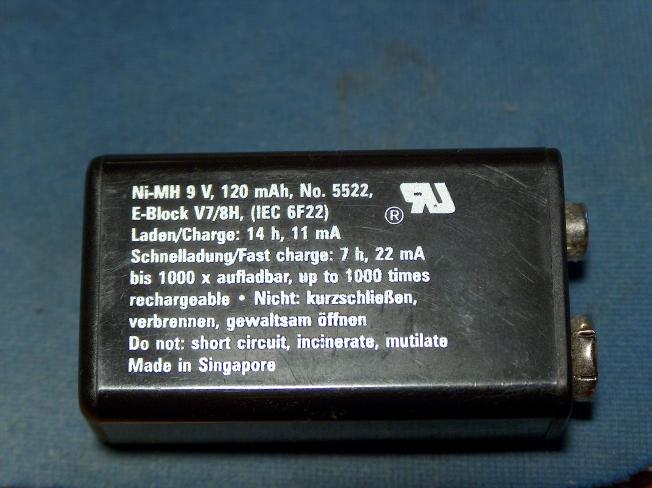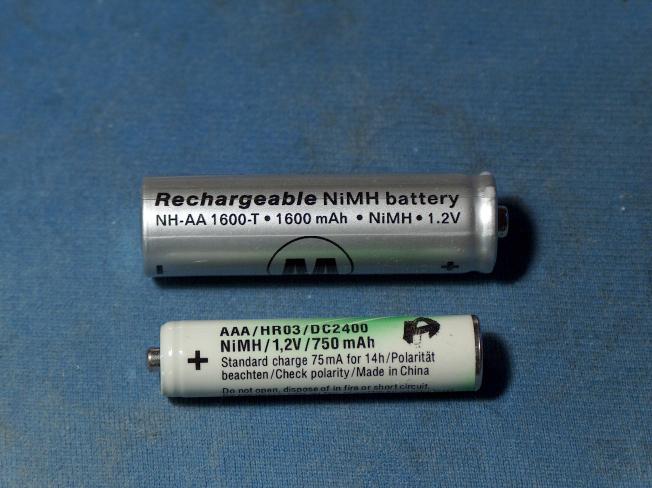9 Volt Battery Chargers
Charge Rate

Everything I need to know is on the label!
You need to know three things to charge a battery.
- Voltage
- Amperage
- Time
Voltage
The voltage the charger outputs in not really that important as long as it is more than the battery voltage. How much more? Enough to overcome the internal resistance of the battery, and push the stated amount of current through the battery.Amperage
- Whatever it says on the label.
- If not, a normal charging rate is the Capacity of the battery C divided by 10 or C/10.
Time
- Whatever it says on the label.
- Long enough to put 44% more power into the battery than it's Charge Capacity
- 14 hours at C/10
- Or you can detect when the battery is charged
From Garden State Battery
The most common and reliable method for charging cadmium-based batteries (NiCd and NiMH) is the "Negative Delta V" method. This method senses a fully charged battery by detecting a drop in cell voltage as the battery reaches capacity. This drop is small but noticeable enough to be detected and signal the charger to shut off or to trickle depending on the charger type. Other chargers use "Delta T" or change in temperature sensors to decide when to stop charging. "Delta T" chargers are less reliable and many manufacturers have adopted the "Delta V" or a combination of the two as their preferred method of choice.
Method I'm Choosing
I'm not going to try to detect when the battery is charged. I'm just going to charge my 9V batteries at 11ma for 14 hours just like it says on the label. They might get slightly overcharged, but they will get fully charged. Then I will be able to rule out charger malfunction as a cause of my problems.

References
-
Garden State Battery
Battery Types, Tips & Technology
http://www.gardenstatebattery.com/contents/en-us/d887.html
-
PowerStream
Technical Resources for Design Engineers
www.powerstream.com/tech.html
-
Planet Analog
How to design fast charging of high-capacity batteries
www.planetanalog.com/features/showArticle.jhtml?articleID=193000473

|

|
Charge Rate
Wall Warts
Simple 1 Resistor Battery Charger
Constant Current Battery Charger from 2 LED's and a NPN Transistor
9V Battery Charger from 2 NPN Transistors
Adjustable Charge Rate Battery Charger from Op Amp
0 - 160 mA Adjustable Charge Rate Battery Charger
Test Results
741C Cheat Sheet
sparksandflames.com
Sparks and Flames
Line2:
Fax:
Copyright © 2020

